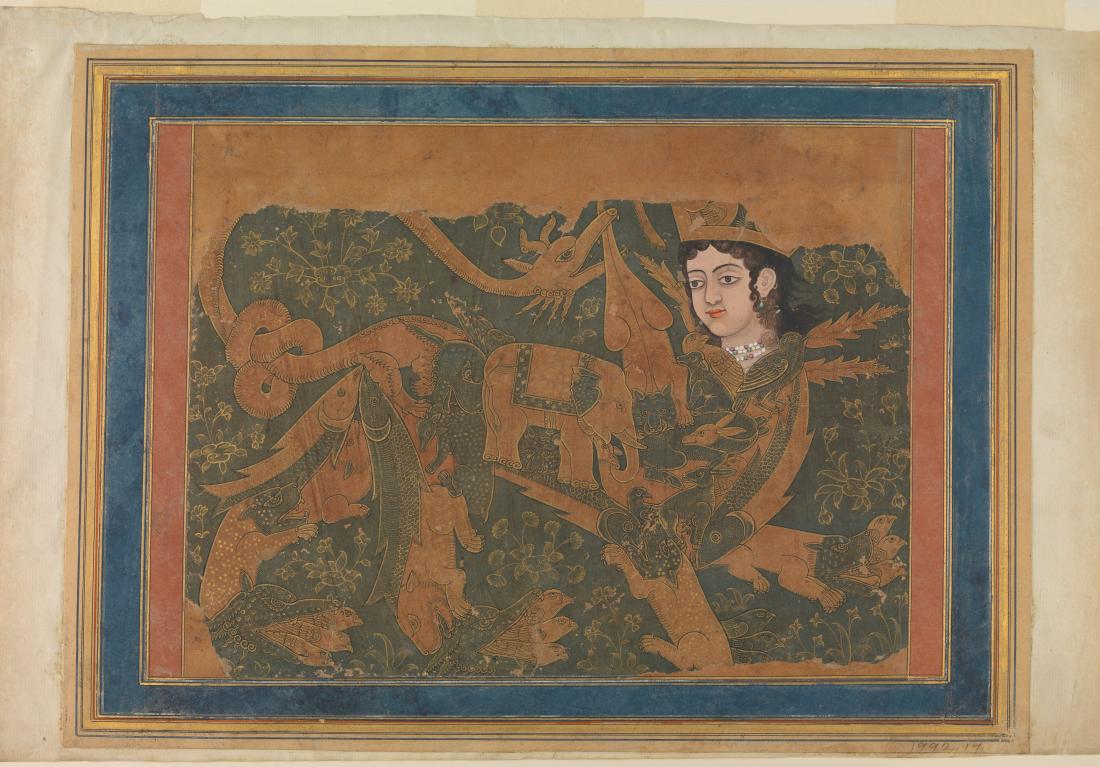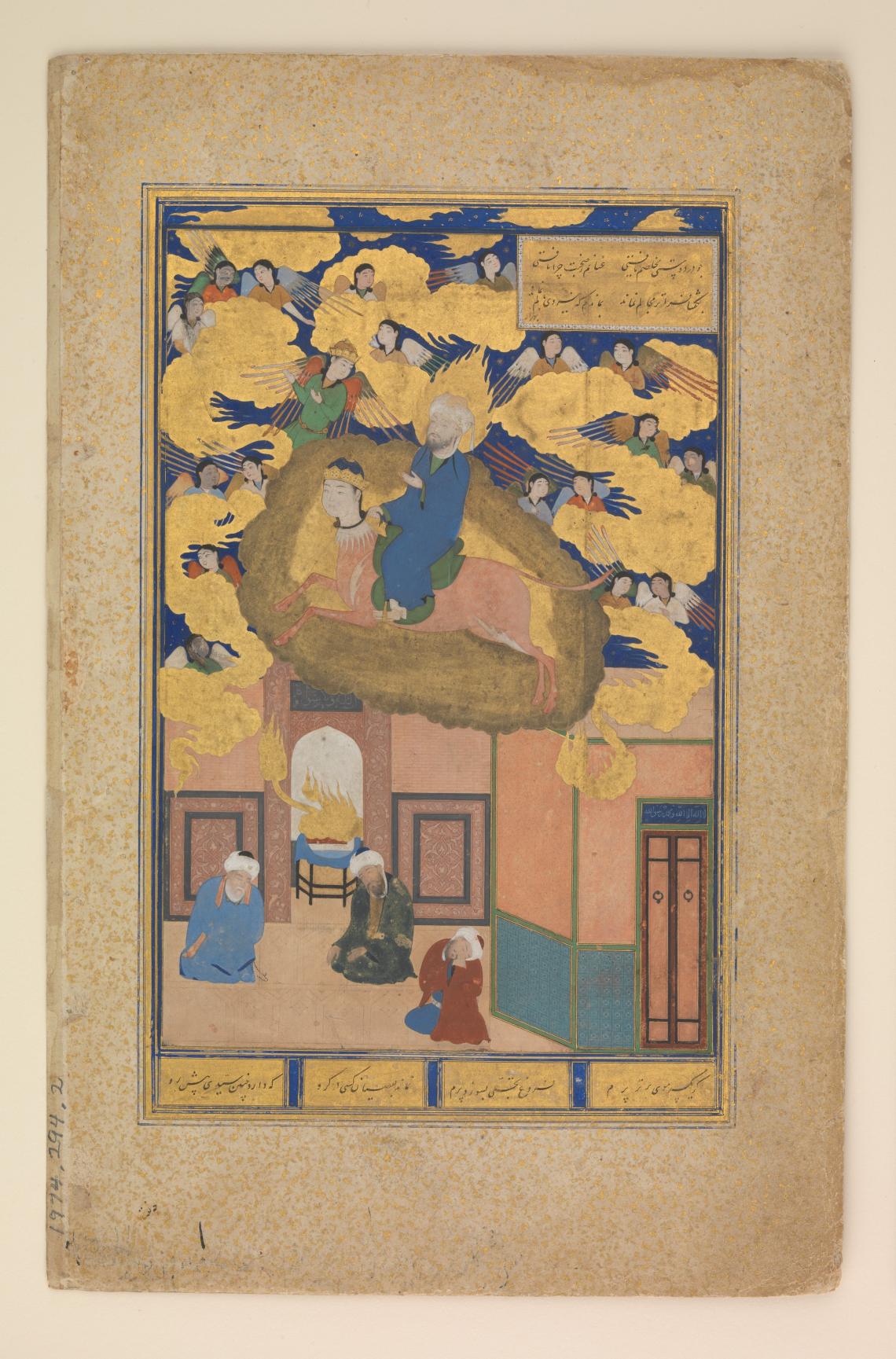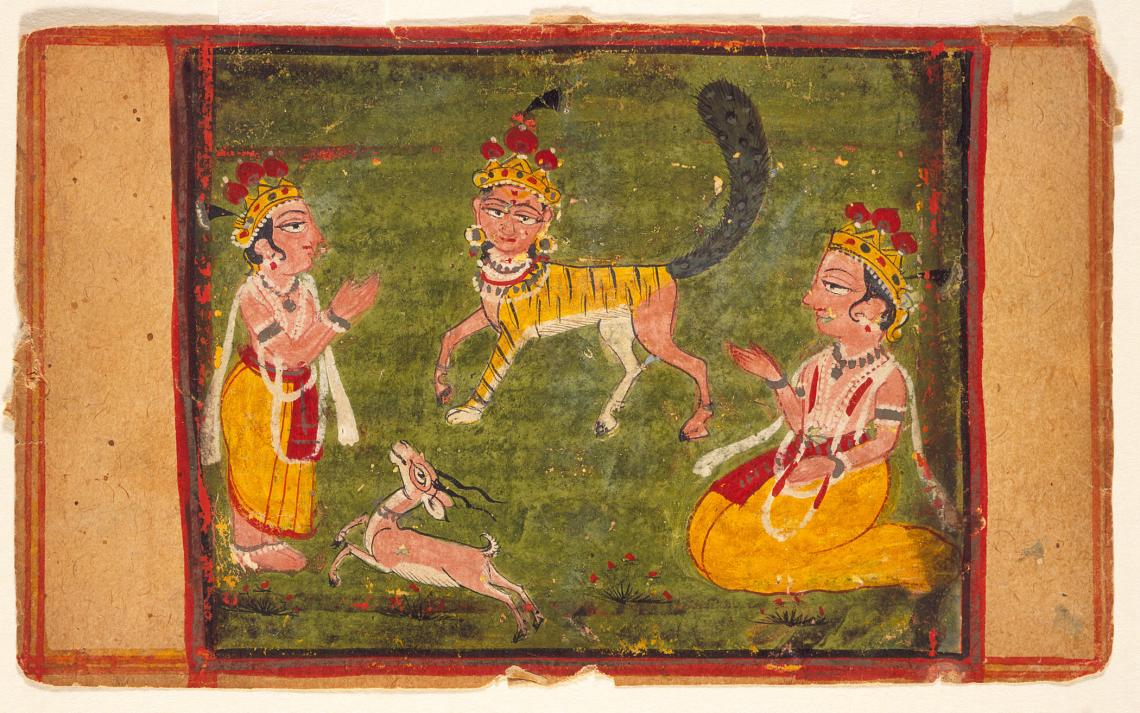The Fabulous Creature Buraq, Deccan, probably Golconda, India, c. 1660-80, Opaque watercolour and gold on paper.
A mythological creature with the head of a human and the body of a horse, the Buraq is closely associated with the Prophet Muhammad in Islamic mythology. While the exact details of their interactions vary over time and place, most hadiths consistently describe the Prophet as riding the Buraq during his night journey from Mecca to Jerusalem, an event known as the isra. In some legends, the Prophet goes on to ride the Buraq through the seven heavens after the isra; in others, he ties it to the wall of a mosque before his ascension. The Buraq is also sometimes depicted as the vehicle of other Prophets in the Islamic tradition, such as Abraham.
The Mi raj or The Night Flight of Muhammad on his Steed Buraq, Folio 3v from a Bustan of Sa'di, Bukhara and Herat, Present-day Uzbekistan and Afghanistan, c. 1525-35, Ink, gold, and colours on paper.
The name “buraq” is believed to have been derived from the Arabic word bariq, meaning “shine” or “brilliance”. Some Islamic commentators have also suggested that the name is derived from the word barq (“lightning”), referring to the creature’s speed. While the Buraq is not explicitly mentioned in the Qu’ran, descriptions of the Buraq can be found in ibn Ishaq’s eighth-century biography of the Prophet. This and other early traditions emphasise the creature’s horse-like features, including hooves, long ears, and long back. The Buraq seems to have originally been described as male, but texts from the ninth century onwards describe it as female. The first textual mentions of human facial features begin to appear from the eleventh century CE.
It is unclear when the Buraq first began to be portrayed in visual art. However, a profusion of depictions survive in Persian manuscript paintings from the late mediaeval period, suggesting the legend and iconography were firmly established around that time. Images depicting the Buraq can also be found in South Asian manuscripts depicting the isra, such as the Mi’ragnama (1436) from Herat (modern-day Afghanistan). The Buraq is the subject of manuscript paintings such as The Fabulous Creature Buraq (1660–80) from Golconda, rendered in the Bijapur style, and The Buraq Worshipped by Two Princes (nineteenth century) from Kashmir.
The Buraq Worshipped by Two Princes, Kashmir, c. 19th century, Opaque watercolour on paper.
Images of the Buraq depict the creature with wings, the tail of a peacock, and the bust or head of a woman, often decorated with jewellery and a headdress. The creature is also sometimes depicted with a leopard hide draped over its body. In popular Islamic posters from the twentieth century, the Buraq was often presented alongside Duldul, the Prophet’s steed, as a pair. It continues to be represented in tazias (mobile shrines used in South Asian Shi’ism, specifically during Muharram) and on trucks in India and Pakistan as a talismanic motif.
This article first appeared in the MAP Academy Encyclopedia of Art.
The MAP Academy is a non-profit online platform consisting of an Encyclopedia of Art, Courses and a Blog, that encourages knowledge building and engagement with the visual arts and histories of South Asia. Our team of researchers, editors, writers and creatives are united by a shared goal of creating more equitable resources for the study of art histories from the region.





